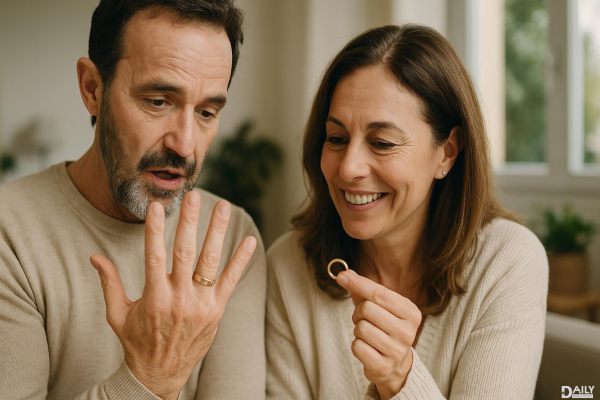Men should wear rings on any finger they damn well please—style has no rules, and neither should you. But if you're looking for the sweet spot between looking sharp and reaping some unexpected health perks, there's actually a method to the madness. From cultural symbolism to pressure-point therapy, where you slide that band can say a lot about your personality and even boost your well-being. Let's break it down.

Sliding a ring onto your pinky isn’t just for mob bosses and old-money aristocrats—it’s a low-key flex. Historically, pinky rings signaled wealth or membership in secret societies (looking at you, Freemasons). But there’s more: in reflexology, the pinky connects to the heart and small intestine meridians. Some believe a snug ring here can aid digestion or even calm nervous energy. Just don’t go full Tony Soprano unless you’re ready for the vibe.
Yeah, yeah, we know—left ring finger = wedding band central. But in many cultures, men wear rings on the right ring finger to symbolize creativity or professional achievement. Acupressure nerds swear this finger links to the "heavenly gate" meridian, potentially easing anxiety or insomnia. Bonus? A statement ring here (sans marital commitment) screams "I have taste." Try a chunky signet or textured tungsten piece.
The middle finger is the ultimate rebel move—bold, unapologetic, and impossible to ignore. In traditional Chinese medicine, this digit ties to circulation and anger management (fitting, right?). A ring here might help channel frustration into focus. Style-wise, go big or go home: thick bands, bold engravings, or even a spinner ring to fidget with during meetings instead of rage-emailing your boss.
Kings and CEOs have rocked index-finger rings for centuries—think Napoleon or modern hypebeasts wearing pinky-to-index "stacked" looks. Reflexology links this finger to the large intestine and lungs, with some claiming rings here improve breathing or confidence (placebo effect? Maybe. Cool factor? Undeniable). Pro tip: avoid oversized designs if you handshake often—nobody wants a knuckle duster leaving impressions.
Thumb rings scream nonconformity—from ancient archers protecting their grip to bikers and hip-hop icons making it a signature. Ayurveda suggests the thumb governs willpower, and pressure here might reduce stress. Practical perk? It’s the least obstructive finger for daily tasks. Try a wide brass ring or something with a movable part to keep restless hands busy.
Silver isn’t just for werewolves—it has antimicrobial properties (great if you’re a germaphobe). Copper? Allegedly helps joint pain, though it might turn your finger green. Titanium and tungsten resist scratches, while wood or silicone rings are MVP for gym rats. Avoid nickel if you’ve got sensitive skin—rashy fingers aren’t a vibe.
Swollen fingers? Take it off—restricted circulation is no joke. Working with machinery or lifting? A degloving injury (Google at your own risk) will ruin your week. And if you’re allergic, opt for hypoallergenic materials. Style shouldn’t come with a side of ER visits.
At the end of the day, rings are like tattoos for your fingers—meaningful, stylish, or just because you felt like it. Whether you’re stacking them for aesthetics or chasing those elusive pressure-point benefits, own it. Just remember: the right ring in the wrong place is still a conversation starter. Now go forth and accessorize like you invented it.
























